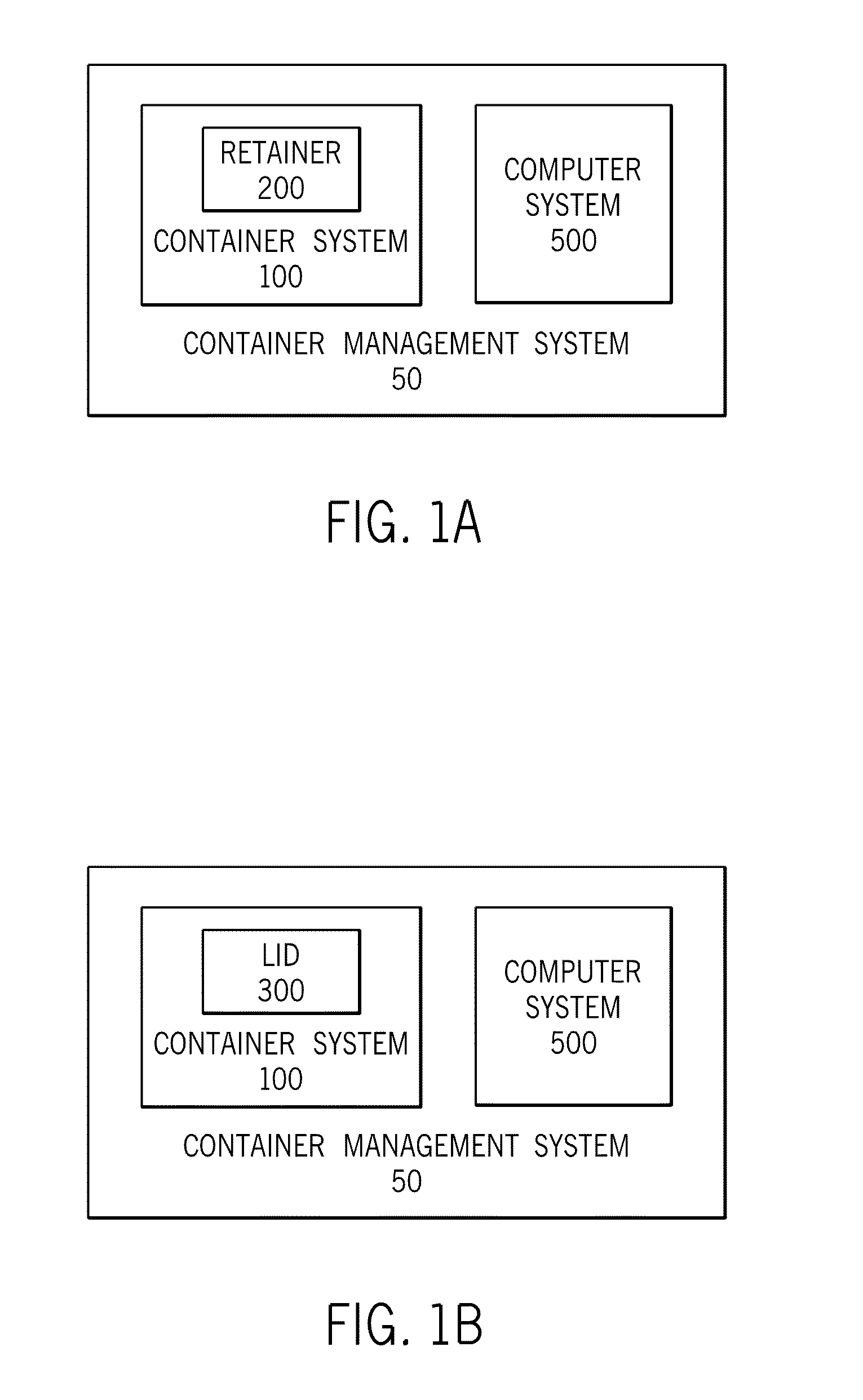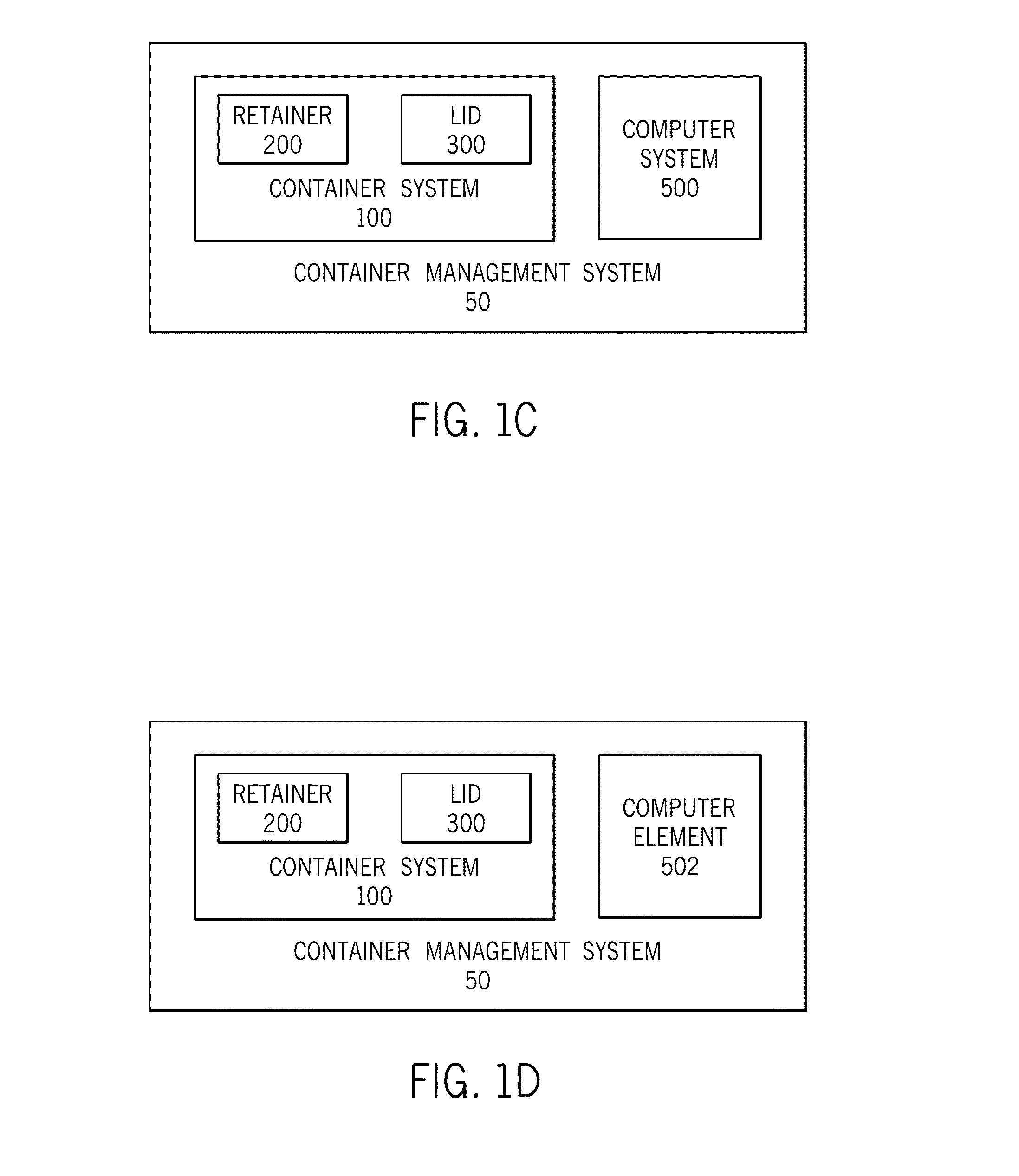System and methods for managing a container or its contents
a technology for managing systems and containers, applied in the field of container management systems, can solve the problems of unsanitary methods or otherwise contaminating beverages, containers generally lack the ability to track temperature readings, and little information about the current status or historical status of products, etc., to facilitate the search of the container system
- Summary
- Abstract
- Description
- Claims
- Application Information
AI Technical Summary
Benefits of technology
Problems solved by technology
Method used
Image
Examples
Embodiment Construction
[0128]For purposes of this application, certain embodiments of the present invention described and illustrated herein are directed to container systems configured specifically to contain beverages, but the discussion is merely exemplary. The present invention is applicable to any type of container system known in the art.
[0129]Also for purposes of this application, any terms that describe relative position (e.g., “upper”, “middle”“lower”, “outer”, “inner”, “above”, “below”, “bottom”, “top”, etc.) refer to an embodiment of the invention as illustrated, but those terms do not limit the orientation in which the embodiments can be used.
[0130]FIG. 1A-FIG. 1C include simplified illustrations of certain general system embodiments of the present invention. Such embodiments include a container management system 50 having a container system 100 and a computer system 500. In the embodiment illustrated in FIG. 1A, the container system 100 is a retainer 200. In the embodiment illustrated in FIG....
PUM
 Login to View More
Login to View More Abstract
Description
Claims
Application Information
 Login to View More
Login to View More - R&D
- Intellectual Property
- Life Sciences
- Materials
- Tech Scout
- Unparalleled Data Quality
- Higher Quality Content
- 60% Fewer Hallucinations
Browse by: Latest US Patents, China's latest patents, Technical Efficacy Thesaurus, Application Domain, Technology Topic, Popular Technical Reports.
© 2025 PatSnap. All rights reserved.Legal|Privacy policy|Modern Slavery Act Transparency Statement|Sitemap|About US| Contact US: help@patsnap.com



